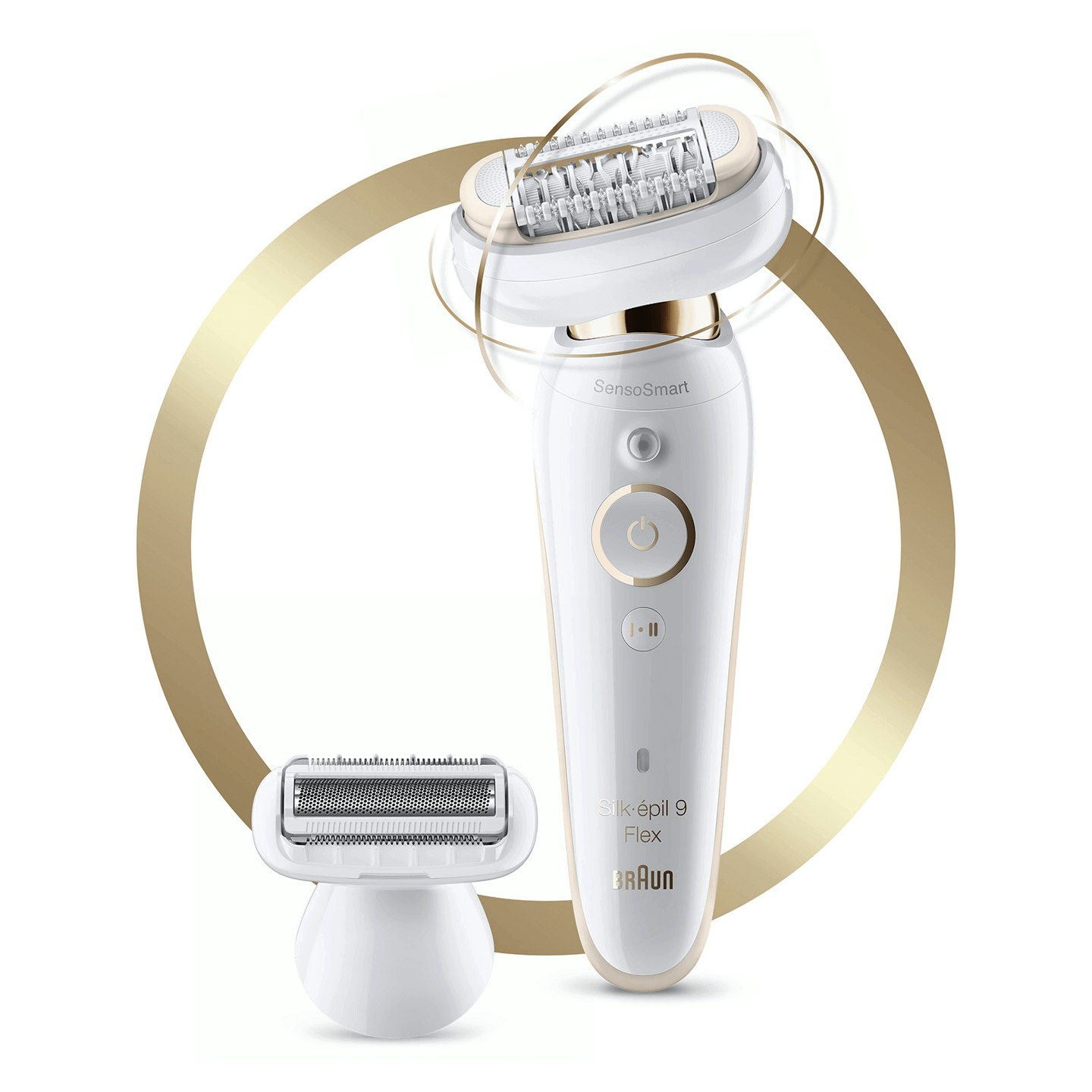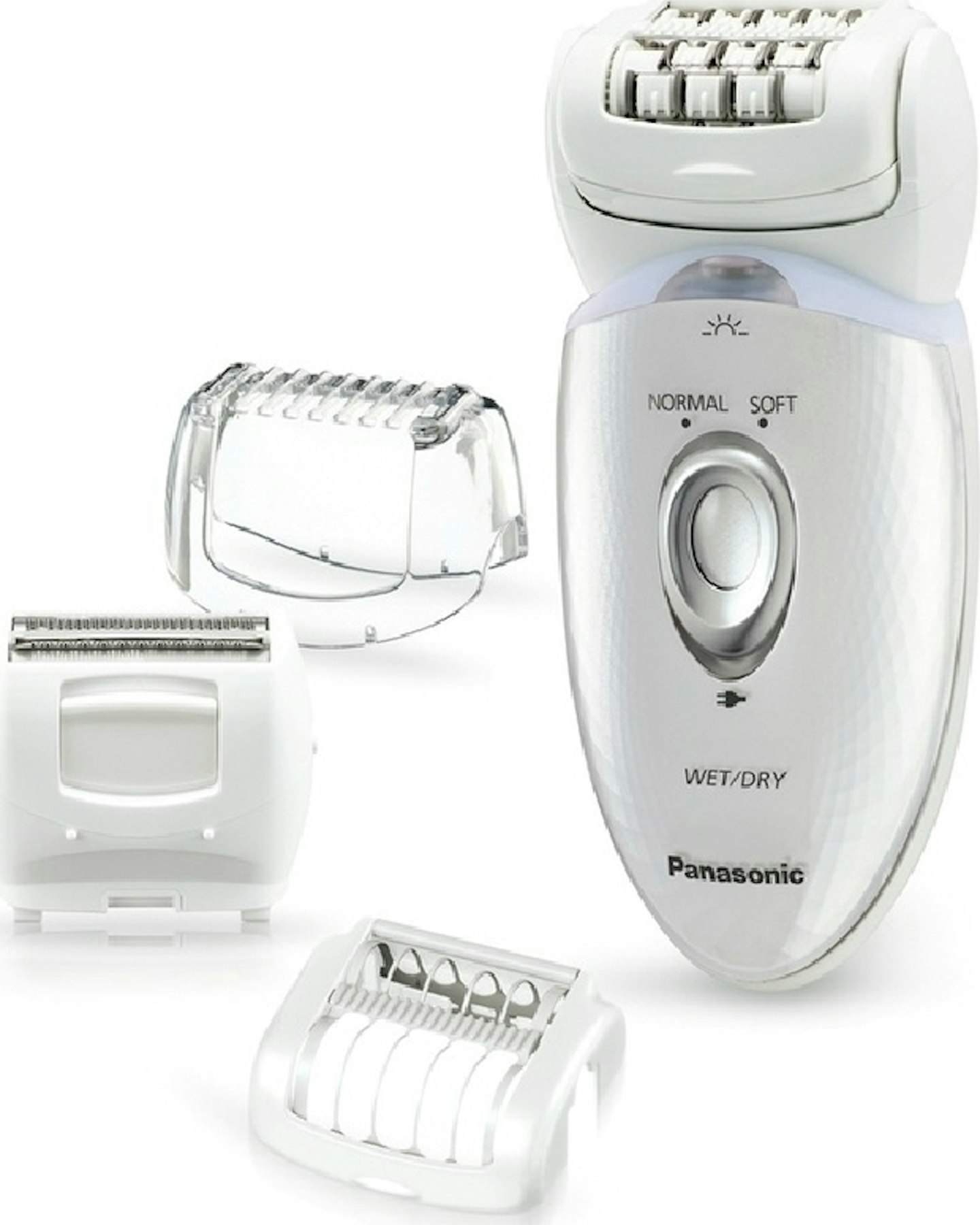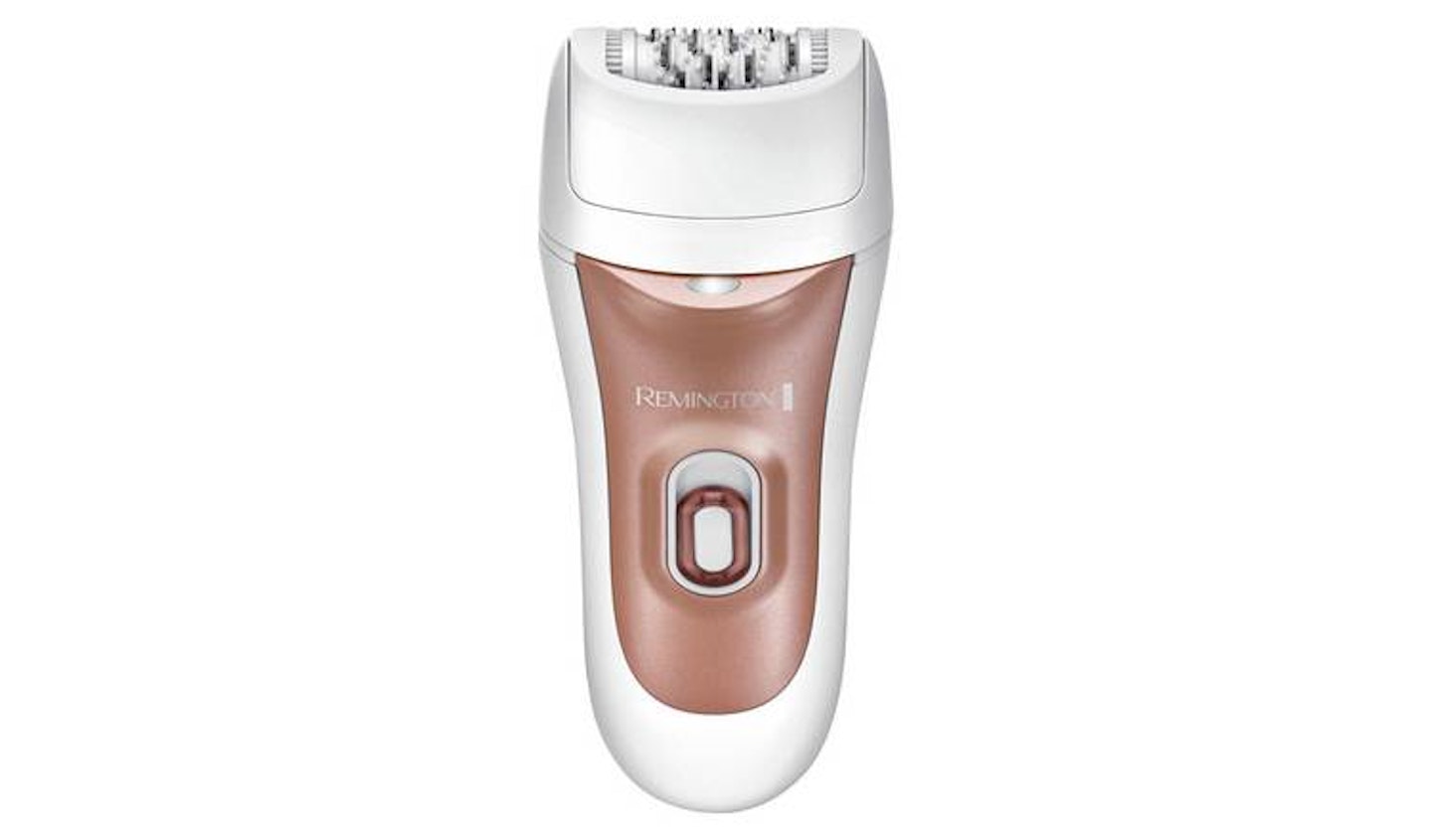Hair removal has to be the most inconvenient and time consuming beauty ritual we practise. A study carried out by Escentual.com revealed that women in the UK spend on average 72 days in their lifetime shaving their legs – that’s the equivalent to 1,728 hours. This depressing stat is made even more painful due to the fact that hair removal is considered the most hated beauty chore.
Every hair removal regime is personal to the individual, and indeed not everyone will want to do it at all. If, however, you are on the constant quest to be hairless and fancy trying a new method of hair removal, consider this your epilating guide 101. We've enlisted the help of Braun Beauty Ambassador, Nathalie Eleni, to talk us through the benefits and the how-tos of epilating.
What is epilating?
Epilating, like waxing, is when you pull the hair out from the root to stunt the regrowth and achieve longer-lasting smoothness. An epilator looks a bit like an electric shaver (and sounds like a lawn mower) but with wheels that spin and a tweezer mechanism that plucks out hair when pressed against the skin. 'Epilation works by gently plucking hair from the root with a series of tweezers which can grab the smallest of hairs (as short as 0.5mm - the equivalent of two days growth),' explains Nathalie Eleni. Waxing generally tends to grab hairs of 2mm length, so epilation is more precise.
Does epilating hurt?
The idea of epilating is daunting, mostly due to how painful it sounds and, well, is. But if you're used to plucking your eyebrows and can now say that the pain is bearable... epilating is the same. The more you do it, the more you become used to the pain. But the first few times can definitely be a touch eye-watering. Youch.
What are the benefits of epilating and how long does epilation last?
The most notable benefit of epilation is that the hair will grow back slower and finer. Nathalie Eleni assures that epilation offers a long-term hair removal solution, giving you hair-free skin for up to four weeks.
Another benefit of epilation is that it's faff-free and not as messy as waxing. You can do it at home at a time that suits you and you can also purchase epilators to use in the shower.
How do you epiliate?
If you've epilated before, you'll know that it is quite painful, depending on your hair type and pain threshold. (Note: an empty house, some loud music and a glass of wine is a set-up that shouldn't be overlooked if you're a newbie.)
If you're new to epilating, you should follow these steps to make it as pain-free as possible:
Before epilating
1. Find the right epilator for you:
There are many different epilators available on the market to suit different budgets and different areas of hair. Make sure you invest in one that is good quality.
Nathalie recommends the Braun Silk-épil 9 9-720 Epilator, £159.99. 'It has a 40% wider head and therefore more Micro-Grip Tweezers than previous models. These tweezers work together to ensure more hairs are captured in each stroke and therefore reducing the treatment time with results which last up-to 4 weeks depending on hair regrowth.'
2. Exfoliate:
Exfoliation is the key to successful hair removal, whatever the method. It removes dead skin cells, smooths skin and, most importantly, fights against ingrown hairs by promoting that the hair regrows in the correct direction. Exfoliate using a loofah, exfoliating gloves or an in-shower body scrub, and massage the skin in circular motions. You should do this before you are due to remove any hair, but it's good practise to exfoliate every time you wash.
3. Soak in warm water:
Just like waxing, if you bathe or shower before you are due to remove body hair it will be less painful because the hair follicles will be looser and hairs will come out more easily.
Whatever your ablution of choice, try and soak in water as hot as you can stand - and without irritating or damaging the skin - for at least 10 minutes.
Natalie says, 'If it’s your first time trying this method, purchase an epilator which can be used in the shower as the warm water open pores which loosen the hair follicles so they are removed easily.'
4. Dry the skin:
After you've washed, your skin should be free of dirt, lotions and moisturisers. Dry your skin thoroughly with a towel, and try pulling the towel in the opposite direction of hair growth so the hairs stand up. The dryer the hairs are, the easier it'll be for the epilator to catch them first time.
During epilating
1. Find somewhere comfortable to sit:
Put some time aside in your day and find somewhere comfortable to sit - it may take a while especially if you're a rookie because you'll be taking lots of breaks to manage the pain. It's also advisable to epilate in the evening as your skin will be red and bumpy afterwards - but will be looking smooth by morning.
2. How to use the epilator:
Don't start at your ankles as they're the most painful place on your leg. Start on the lower leg on the lowest setting, and pull the skin taut to help the epilator pick up hair.
Move the epilator in circular motions over your skin, stopping when necessary, and you'll start to see the magic instantly.
Your skin will quickly get used to the sensation of the epilator and you will be able to tackle trickier areas.
Don't be too ambitious on your first go; ease yourself into it. Also, it is common to draw a little blood on the first go, but don't be too put off.
After epilating
Be prepared for your skin to resemble that of a plucked chicken, and make sure you don't lather on any scented lotions or creams onto the freshly-epilated skin as they will irritate it. Try using a lotion with aloe vera as this will soothe the skin.
By this point you may be thinking, 'as if I'm putting myself through that again,' but the results may just sway you to keep going, and each time you do it it becomes easier, quicker and less painful.
If you're serious about decreasing hair regrowth, epilate the same area every day for one week, and then begin doing it weekly. You will see great results and eventually will only need to epilate monthly.
Can you epilate facial hair?
You can use an epilator on your face, but as the skin on the face is incredibly sensitive it may cause irritation. Not to mention the pain is quite intense. But, if you take all the right steps and remember to pull the skin taut, you can as well achieve a smooth hairless finish on your face.
Can you epilate underarms?
Your underarms are a great place to build up tolerance to epilating, as after a while you'll find you are hairless for weeks under there - how luxurious would that be to have no stubble, especially in the summer months.
It can be tricky to get the right angle when tackling armpits so you will have to hold the epilator at different degrees and pull the skin around to catch all the hair.
Can you epilate legs?
Absolutely! The legs - especially below the knee - are the most common place people epilate, and continuous epilating will see amazing results. Plus, you can quite quickly build up a strong tolerance to the pain on your legs.
Can you epilate bikini line?
Yes! It may be tricky and painful to begin with, but the bikini area is the where most women want to stunt hair growth, as shaving can cause complications and isn't long-lasting.
Remember also to exfoliate this area whenever you can, as it is easier to get ingrown hair if not careful, which could then lead to infection.
SHOP: The Best Epilators
The Best Epilators For Women
 1 of 5
1 of 5Braun, Silk-épil 9 Flex Epilator, from £184.99
 2 of 5
2 of 5Braun Silk-épil 5-511 Wet & Dry Epilator, £90
 3 of 5
3 of 5Panasonic ES-ED53 4-in-1 Wet & Dry Epilator, £89
 4 of 5
4 of 5Philips Advanced Wet And Dry Epilator, £130
 5 of 5
5 of 5Remington 5 in 1 Corded Epilator, £49.99
READ MORE: How To Easily Remove Facial And Body Hair At Home With Threading, Sugaring And Waxing
READ MORE: Getting To Grips With At-Home Laser Hair Removal And The Best Devices To Buy Now
